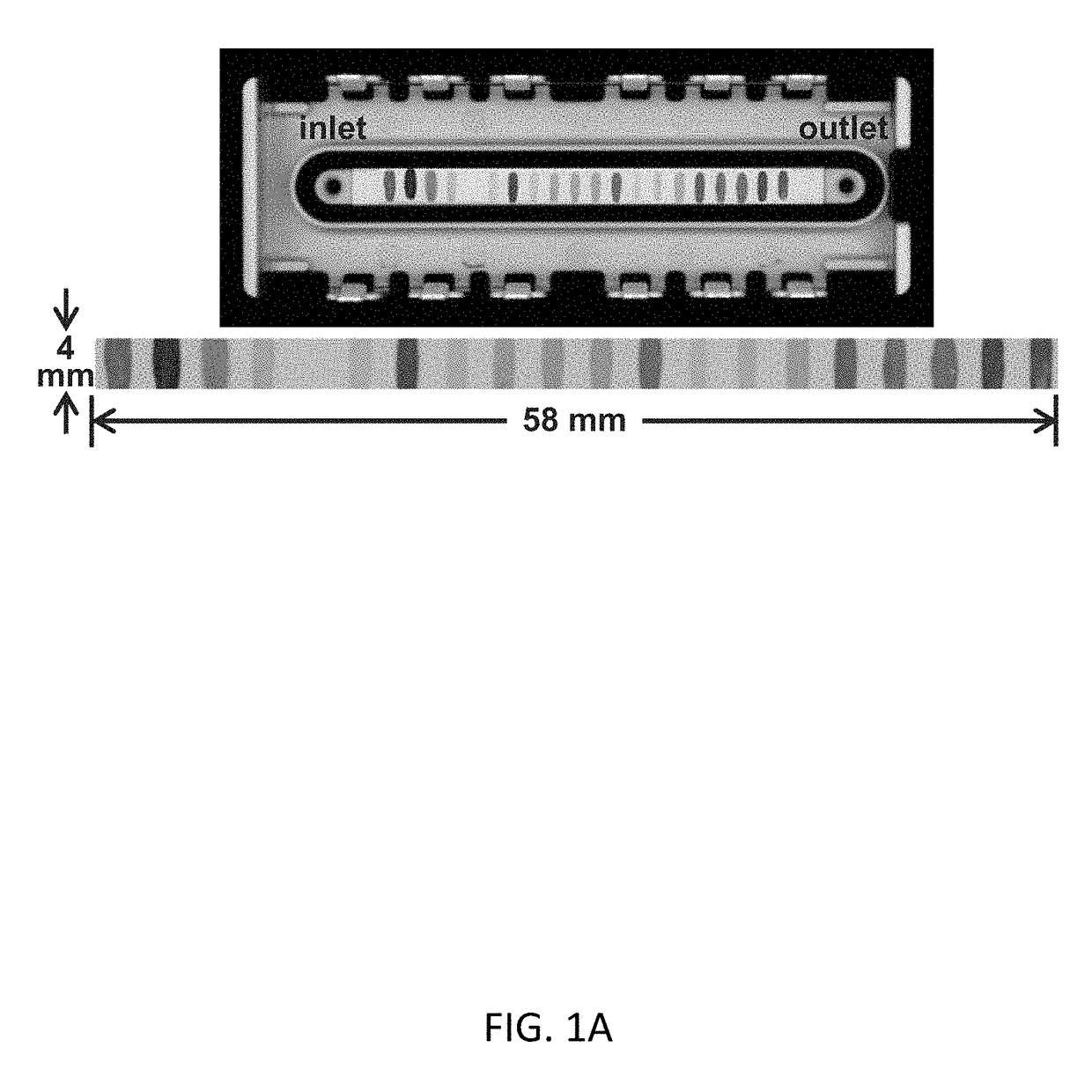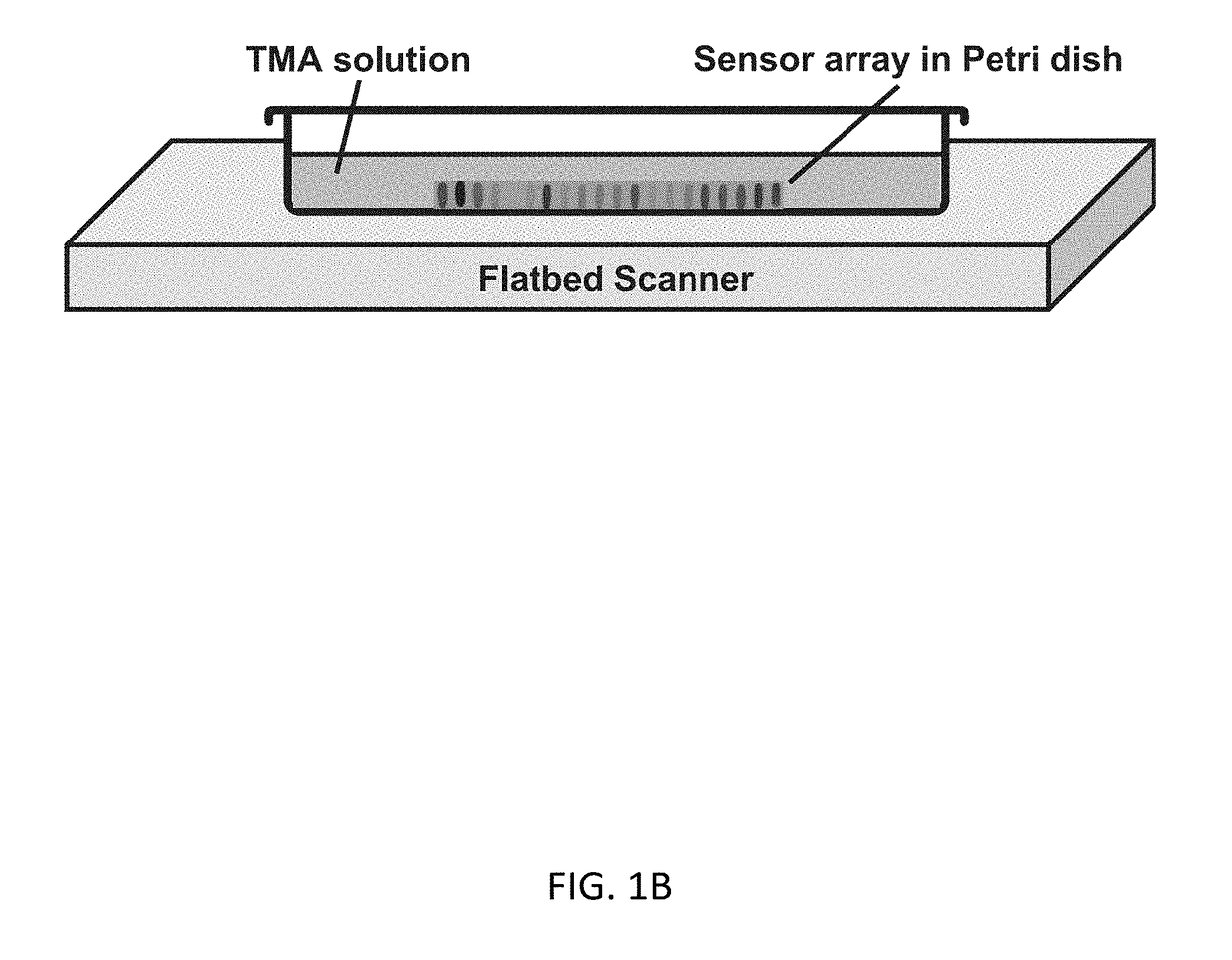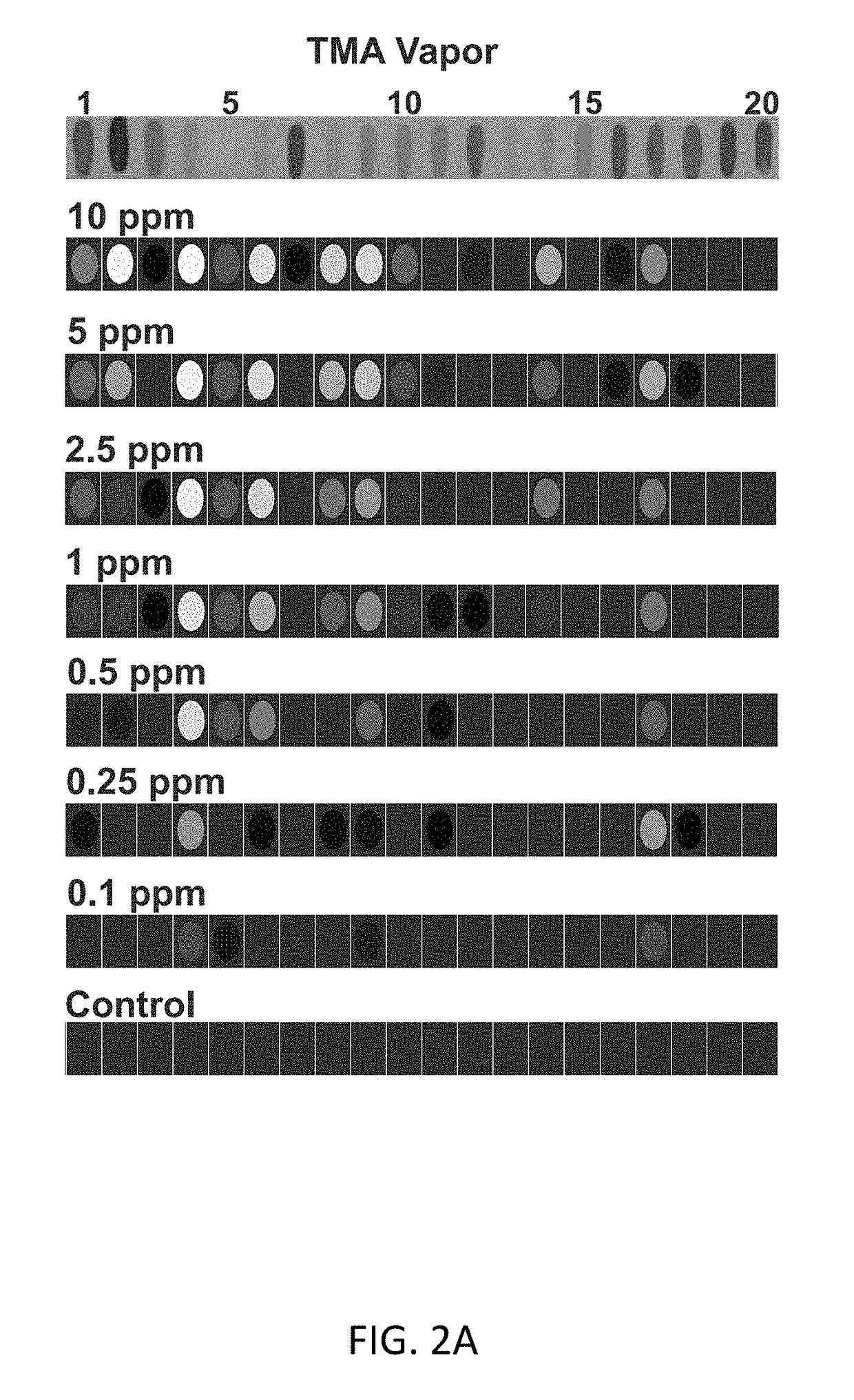Methods and devices for detection of trimethylamine (TMA) and trimethylamine oxide (TMAO)
a trimethylamine and trimethylamine oxide technology, applied in the direction of instruments, food testing, analysis using chemical indicators, etc., can solve the problems of lack of portability, complicated preparation of sensors, and high instrumentation cos
- Summary
- Abstract
- Description
- Claims
- Application Information
AI Technical Summary
Benefits of technology
Problems solved by technology
Method used
Image
Examples
example 1
Methods and Devices for TMA Analysis
[0080]The arrays were linearized for improved gas flow path and printed robotically (FIGS. 7A-B), then mounted on a snap-together, disposable cartridge (FIG. 1A); the low dead volume of this configuration greatly improves the array response time. Digital images of the arrays were acquired before and after exposure to diluted gas mixtures or aqueous solutions using an ordinary flatbed scanner (Epson Perfection V600, FIG. 1B and FIG. 8). Color difference maps were generated from changes in red, green and blue values of each spot upon exposure to analytes. FIGS. 2A-B shows sensor array responses (i.e., changes to the red, green, and blue values of the digital images) to a series of concentrations of gaseous and aqueous TMA after 2 min exposure: significant color changes were observed by naked eye even at sub-ppm level (FIG. 9). The biggest responses are from solvatochromic dyes (spot 1-2), pH indicators (spot 4-6 and 8-11) and metal-containing dyes (...
example 2
Materials and Methods for TMA Analysis
[0091]Array preparation. All reagents were analytical-reagent grade, purchased from Sigma-Aldrich and used as received. Preparation and robotic printing of colorimetric sensor arrays (FIGS. 7A-B) have been described in detail elsewhere (Askim et. al. Chem. Sci. 2016, 7, 199-206). The chemoresponsive dyes used in each spot is elaborated in Table 1 along with a color-coded legend indicating the expected chemical reactivity of each spot; visualized image captured by handheld device is shown in FIGS. 5A-B.
[0092]Analytes generation. All gases at their selected concentrations were prepared by mixing the gas stream of prediluted analyte with dry and wet nitrogen gas using MKS digital mass-flow controllers to achieve the desired concentrations and relative humidity at a total flow rate of 500 sccm (FIG. 8). Gas flow was running for 30 min to achieve a stabilized concentration before each measurement. Analytes concentrations were confirmed by in-line ana...
example 3
Procedures and Methods for TMAO Analysis
[0097]A device as substantially shown and described herein offers a possible approach for accurate and rapid quantification of TMAO in a typical biological sample with the presence of multiple amino components, i.e., a simulated urine sample. Simulated urine consists of various inorganic salts (e.g., sodium chloride, disodium phosphate, monopotassium phosphate, etc.), volatile amines (e.g., ammonia, TMA, dimethylamine, etc.), involatile amines (e.g., TMAO) and organic compounds (e.g., creatinine, uric acid and urine, etc.). The method exemplified here aims to evaporate all volatile amines, redissolve involatile species (which includes TMAO), and reduce TMAO to TMA using a highly specific reductant and catalyst (e.g., sodium borohydride and Raney nickel, FIG. 20) that selectively targets N-oxides. Based on our study, extremely high conversion rates and yields can be achieved within 2 min with the addition of 8 molar equivalences of reductant (F...
PUM
 Login to View More
Login to View More Abstract
Description
Claims
Application Information
 Login to View More
Login to View More - R&D
- Intellectual Property
- Life Sciences
- Materials
- Tech Scout
- Unparalleled Data Quality
- Higher Quality Content
- 60% Fewer Hallucinations
Browse by: Latest US Patents, China's latest patents, Technical Efficacy Thesaurus, Application Domain, Technology Topic, Popular Technical Reports.
© 2025 PatSnap. All rights reserved.Legal|Privacy policy|Modern Slavery Act Transparency Statement|Sitemap|About US| Contact US: help@patsnap.com



